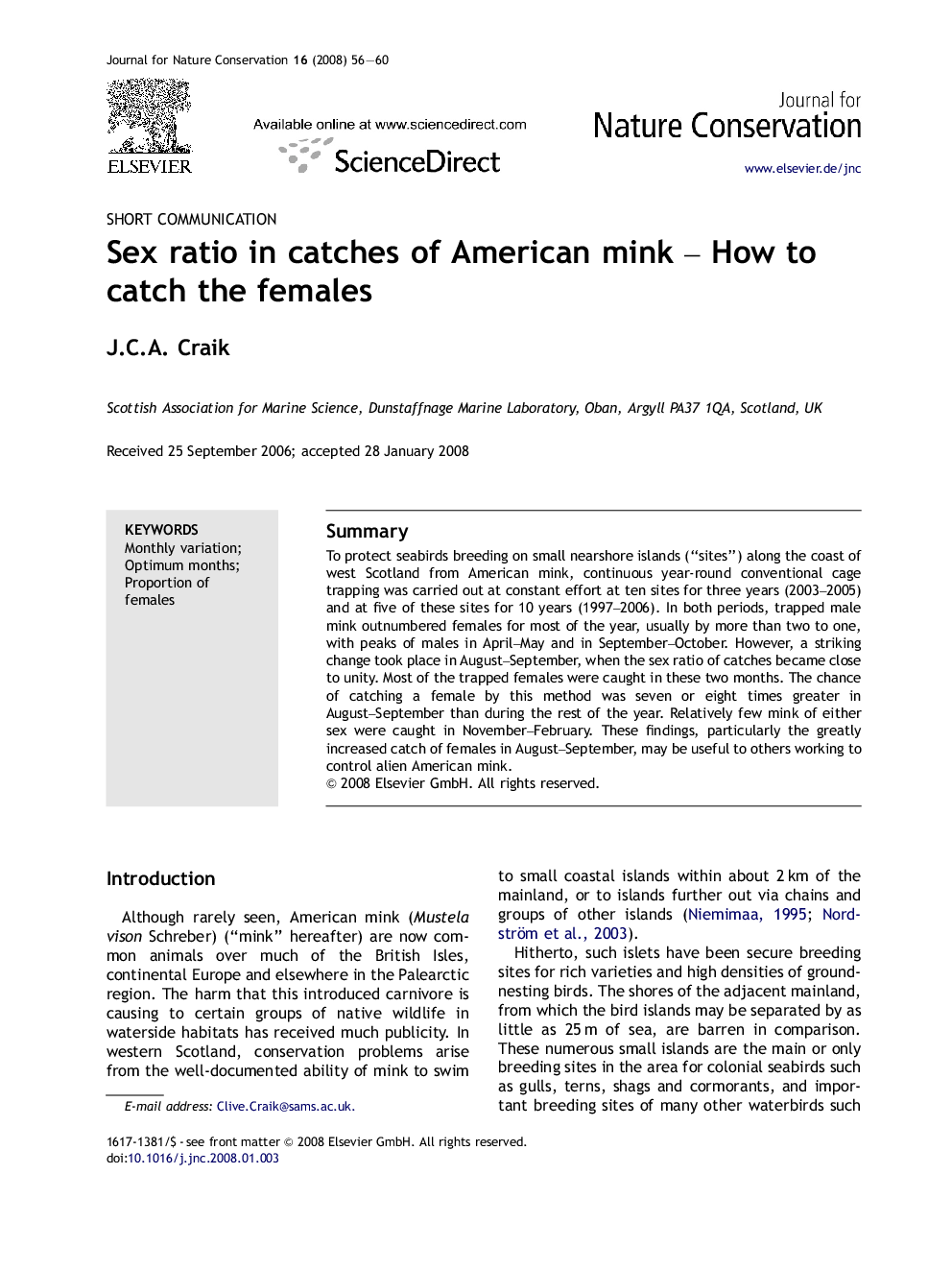| Article ID | Journal | Published Year | Pages | File Type |
|---|---|---|---|---|
| 4400111 | Journal for Nature Conservation | 2008 | 5 Pages |
SummaryTo protect seabirds breeding on small nearshore islands (“sites”) along the coast of west Scotland from American mink, continuous year-round conventional cage trapping was carried out at constant effort at ten sites for three years (2003–2005) and at five of these sites for 10 years (1997–2006). In both periods, trapped male mink outnumbered females for most of the year, usually by more than two to one, with peaks of males in April–May and in September–October. However, a striking change took place in August–September, when the sex ratio of catches became close to unity. Most of the trapped females were caught in these two months. The chance of catching a female by this method was seven or eight times greater in August–September than during the rest of the year. Relatively few mink of either sex were caught in November–February. These findings, particularly the greatly increased catch of females in August–September, may be useful to others working to control alien American mink.
